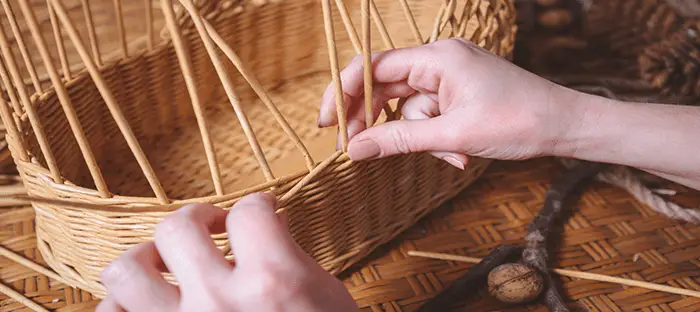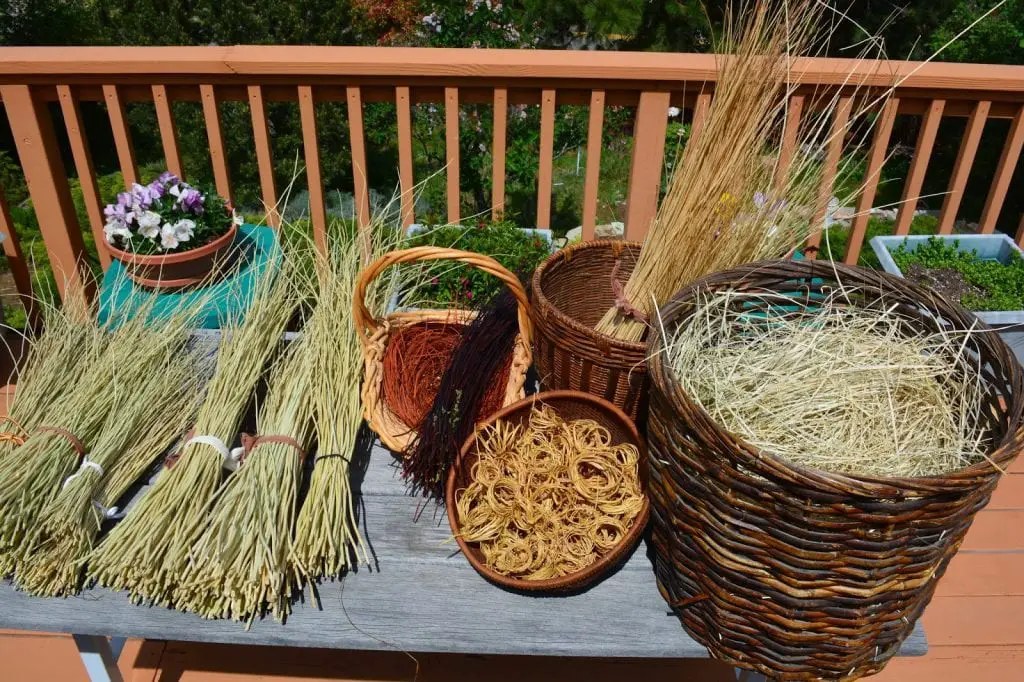
Baskets are made with any pliable and sturdy materials. There are countless materials one can use, ranging from traditional ones to machine-made plastics, which dominates today’s supply. Whatever the materials used, basket and basket weaving are thriving and purchased by many because of how practical and convenient they are.
Others choose to make their version of baskets and learn the art of basket weaving by using easy to get materials such as leaves and reeds. These materials are known to be effective and long-lasting. They are likewise readily available and can be ordered anytime.
Still, there are other different basket making materials you can use. Get to know these different types and learn more about how to prepare them before doing the basket making procedure.
Different Basket Making Materials

Learn the different basket making materials and the things you need to do to prepare and get ready for basket making.
Grass
There are different kinds of grasses you can use to create a basket. This is way cheaper since you can get grasses anywhere and everywhere. Some of the grasses you can use are seagrasses, cereal grasses, bamboos, and other long blade grasses for easier handling. Long blade grasses make it easier to finish the product compared to short blade grasses.
To prepare the grass basket making materials, you will first need to collect as many grasses as you need. You can simply pluck away the grasses, or use scissors to cut them easily. Scissors are also safer to use.
Gather your grasses and put them on a flat and waterproof surface. Let them dry. You can move your grasses around the surface to make sure every inch is dry. Some grasses may curl, so make sure to separate them from the rest of the glasses. Dried grasses will still retain its color.
Once they get dry, you can now start the process of preparing them. Before you begin making baskets, put the grasses in the bin and soak them in water for forty-eight hours. Make sure it gets fully soaked so it won’t break during the basket making process. After soaking them, the grasses are now ready for weaving.
If you weren’t able to use all soaked grasses, you could put them in a plastic bag. Make sure to wrap them first in a towel, sealed inside the plastic bag, and stored in the freezer.
Palm leaves
Another basket weaving materials you can make are the palm leaves. They are likewise easy to get. Compared to grasses, there is no need for the palm leaves to get dry and soaked for two days. You can use them fresh. Just make sure to choose the palm leaves which have a bright color and no obvious discolorations.
You can wipe the palm leaves clean, so dirty, webs and dust are free of it. You can likewise wash it if you want. If your palm leaves come with the leaf branches, cut the leaves out in long lengths. Once they are clean, you can start making your baskets.
Roots
Roots are likewise one of the best baskets making materials used by most people. They are strong and amazingly flexible, so it will be easier for you to handle it. They are thin and have great color when cleaned. Most of the roots used are from conifer, spruce, fir, and other trees. Each kind and species of trees have different kinds and features of roots. The best time to find these roots are in spring and summer.
If you don’t want dirt and hard work, you can purchase roots in the store, but if you want to get the experience of harvesting some, be prepared. Some roots, especially spruce roots, grew on the top layer of the soil, so it is easier to get them.
These roots are tangles and in different sizes. Find the ones who have the same diameter as a pen or pencil, or bigger if you can. Don’t pull or cut the roots right away. Find the source of the roots. Follow where the roots will go and coil the other end in a circle. Avoid overharvesting, for the roots, are yet important to the trees. Once you are done, put the dirt back and hide the roots the way they were before.
To remove the outer layer of the roots, get a small knife or pull the roots back and forth on the corner of the table until the first layer opens. This time, it is easier to pull the skin off. Remove all the root’s bark until all that’s left is the inside root, which is color white.
To prepare the roots for basket making, soak the roots in warm water for a few minutes. Leave it there. After a couple of minutes, the roots are ready to use. Make sure to keep them moist by spraying water now and then. This will avoid getting the roots all brittle and bad.
Reed
Reed is one of the most common baskets for making materials. It is readily available in every craft store and online. It is additionally simple to prepare reed.
When it comes to soaking reed, a lot of basket makers soak weeds to make it pliable. However, if you are working with dyed reeds, avoid soaking them. Instead, you can just gently dip it into cold water, then let it rest on the table to allow the reed to absorb the moisture.
With the natural reed, you can use the same process or have it soaked for a few minutes. Do this especially when using thicker reeds. When the reed gets dry while weaving them, spray a little water and use the towel to wipe off the excess water.
Conclusion
The different basket making materials require different preparation methods. Some of them need to be fresh when used, while others need to be dried and soaked to get the best feature. The preparation has to be done carefully well since the most important factor in successful basket making is using the right and effective material. Once you get the process done, basket making will get easier.
The right materials and how they are prepared will always affect the way a product will appear. So, make sure you have everything researched and covered. Have fun on your basket making experience and get your basket making materials ready and in good shape.
